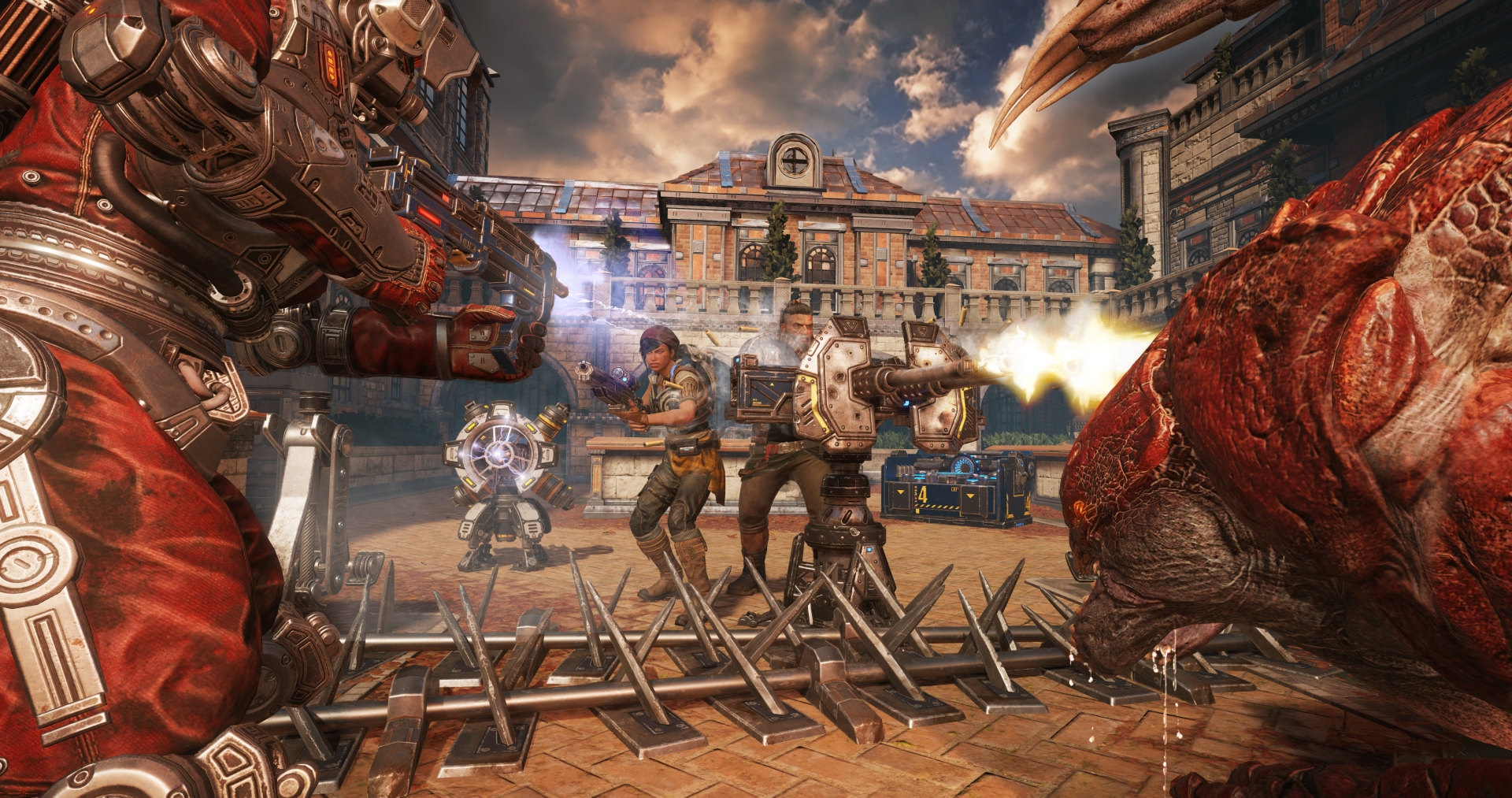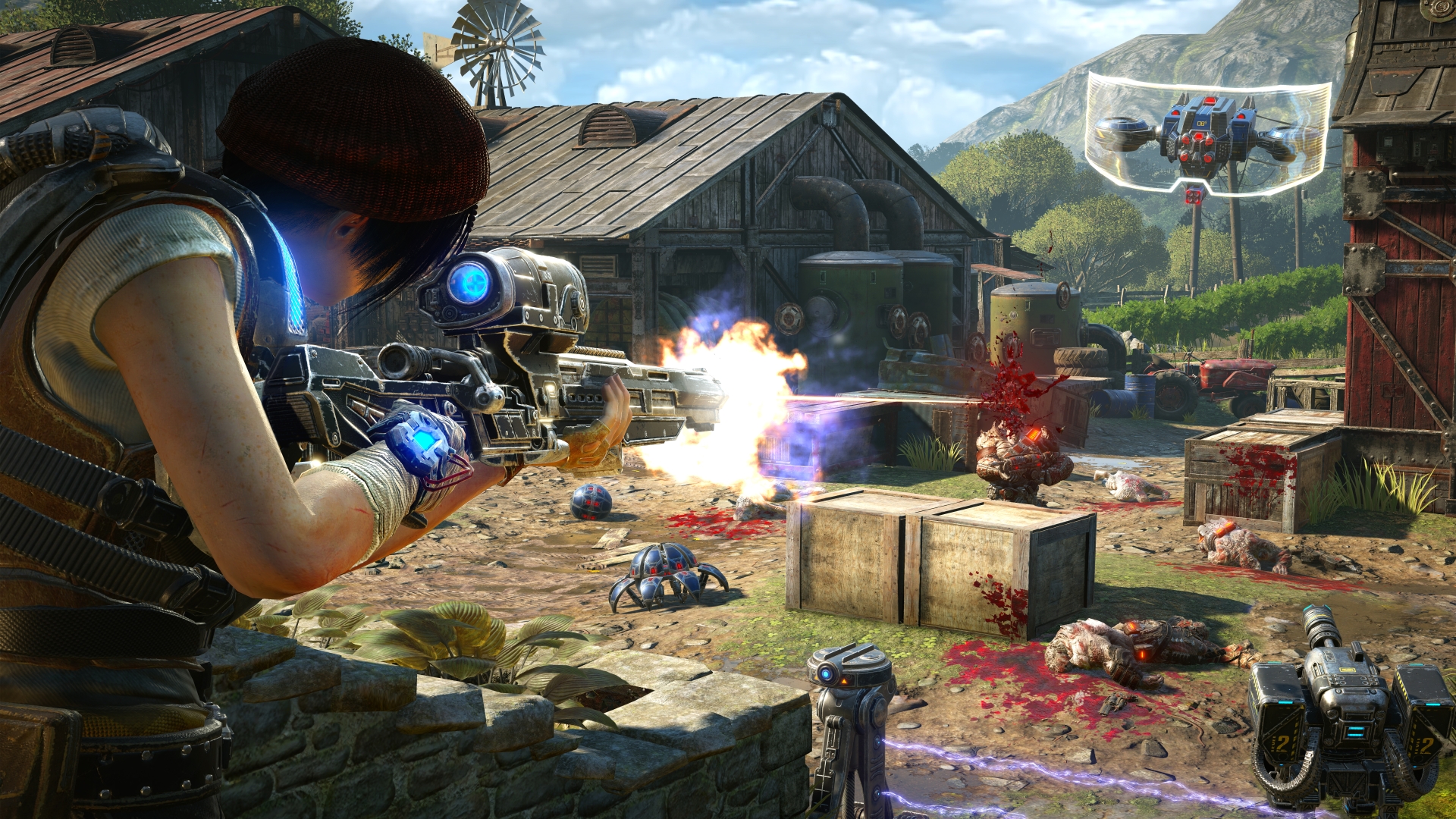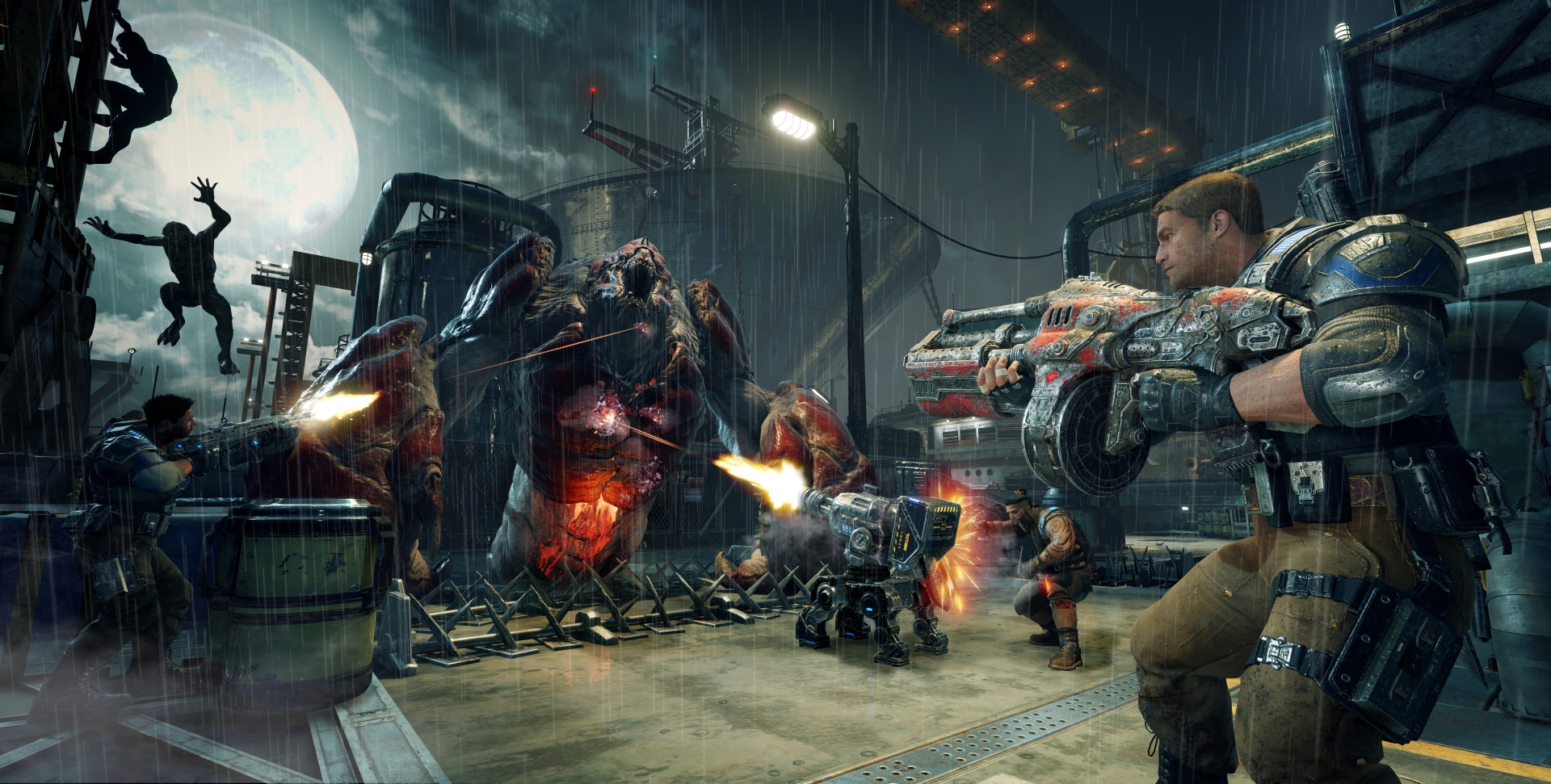Gears of War 4's Horde Mode is a hyper-violent take on tower defense

For a generation of console shooter fans, Gears of War 2's Horde Mode was an initiation into the wonderful world of co-op. Teaming up against legions of enemies naturally lends itself to memorable moments, like finally figuring out the perfect way to flawlessly clear a wave of baddies, or wading into a mob of monsters for a desperate last-second revive that results in a clutch victory. After its lamented absence in Gears of War: Judgment, the beloved game mode is back for Gears of War 4. The basic framework is just like you remember - five players against 50 waves of increasingly grueling deathsquads - but there are some key differences in what the developers at The Coalition have dubbed 'Horde Mode 3.0'. Suffice it to say, this Horde Mode looks like it could be shooterkind's first M-rated take on tower defense.
First up on the list of sweeping shifts is the Horde itself. Following the events of Gears 3, Locusts are out, replaced by mutants known as the Swarm and an army of DeeBees (a deceptively goofy nickname for killer robots). Enemy types vary, but every 10 waves, you'll have to take down a particularly tough boss, just like previous Horde experiences. Then there's the addition of the Fabricator, a critical, movable structure that lets players pool resources to build defensive fortifications like barricades and turrets. And finally, the most crucial change of all: a class system with five specialized roles, complete with unique abilities that let you tune your armor-plated supersoldier to your preferred playstyle. GOW4's lead multiplayer designer Ryan Cleven gave me a quick breakdown of each class:
- Soldier: The embodiment of classic Gears gameplay, where you hunker down behind cover and shoot anything that moves. "It embraces the idea of the Lancer and cover," says Cleven, "and gives you bonuses for things like landing great active reloads, or taking less damage when in cover, as well as expanding out the idea of defensive grenade play." Soldiers are the all-rounders of the bunch, able to maintain defense while still putting out decent DPS.
- Sniper: The marksman that's constantly on the lookout to headshot larger creatures. As you'd expect, they excel when using a Longshot or the new Mbar sniper rifle. But even when there's no main target to focus-fire, they can still rack up kills. "One of the skills they can equip allows them to get explosive headshots, which will do AOE damage," Cleven explains. "So if they're a Sniper that likes to counter more mob-type opponents, they can build in that direction."
- Scout: A close-combat expert perfect for those who want to run around the frontlines, smashing through baddies at point-blank range. "The goal of the Scout is to be out there collecting power, [which in turn charges] the Fabricator to build fortifications made by the Engineer," says Cleven. "You'll have the Scout out there running around picking up power and engaging in very close-range combat through either buffed shotgun play or buffed melee play, and we give them a whole bunch of survivability benefits."
- Engineer: An adept builder who can reshape the map with their fortifications, making life easier for all their allies by funneling enemies into chokepoints or deploying weapon pickups. "They get discounts at the Fabricator, and wield more effective and efficient reloading and repairing tools," says Cleven. "They're really the backbone of the 'building the base' play that's in the game."
- Heavy: For those who just want to mow down the Horde in droves, using whatever artillery they can get their hands on. "This is really for the people that like big explosions and big weapons," says Cleven. "They get a lot of benefits from using power weapons, heavy weapons, and turrets."

With five players on your co-op team and fives classes to choose from, it's recommended that you take one of each role - but you can go with whatever composition you see fit. It's important to pick the class that best suits your playstyle: "If you go in there with the most well-rounded team comp you can, but the person playing the Sniper really doesn't like sniping, they shouldn't be playing as Sniper," says Cleven. "They should be playing something that they like playing." That said, there's power in diversity. "Having too much of a particular specialty, you had better know what you're doing. Like, five Snipers - you better all be really good at aiming, and picks skills that [serve different functions]. A core to Horde 3.0 is building your base out, and without an Engineer..." Cleven pauses. "If you're great at headshots, you could make it work. So we hope to see what interesting team comps people put together."
Your class skills are tied to Gear Cards, collectible buffs that you'll be happy to know aren't consumables. These skills - including passive buffs and active bonuses - only apply to you, and once you've chosen your set for a playthrough, they'll be permanent bonuses for the duration of that run. "Every session that you play, you're going to have to make a choice," says Cleven. "Each class has access to around 10-12 skills at launch. At the beginning, you can only pick one of them - then as your class levels up, it'll unlock additional slots up to five. So the most a person can ever bring into a single Horde run is five of those skills. That means you're going to have to build your character in one direction or another." As you've probably come to expect in a climate full of microtransactions, you'll be able to earn these skills by playing, or find them in purchasable, randomized chests. And the opportunity to mix and match your collection should add a healthy dose of variety to each class as you level them up. "Whenever you open up a new slot, it's going to change the way you think about the cards that you already have," says Cleven.

Interestingly, Gears of War 4 treats all its multiplayer maps as multipurpose, playable in competitive Versus or cooperative Horde Mode alike. "We build towards Versus first, because they're very strict in what they can be," says Cleven. "But what we've found is that a lot of these maps, if they adhere to the Versus rules, turn out to be really great combat spaces for Horde. Versus requires you to have points that are stronger than others, in terms of defenses; it's a cover-based shooter, so portions of the map have to be more defensible than others, with good sight-lines, that kind of thing." That's not to say that the designers simply drop Horde players into existing maps and call it a day. "We did have to do things like widen doorways, or raise some roofs up a little bit," says Cleven. "And when we put the spawns in, it would take two or three playthroughs on a map before we found we had the coverage we needed for Horde."
There are way more variables to sift through in this Horde Mode, between team makeups, chosen skills, and the ability to build structures just about anywhere on a heaping helping of maps. But it's all about giving players more possibilities for how they want to wipe out each wave in whatever way most pleases them. "We've embraced the emergent play that's core to the nature of Horde Mode," says Cleven. "The space for trying out and experimenting is so large that it's difficult - probably impossible - for us to try out each one of those ourselves. I can't wait to see what the community does with it." You'll be able to take on Horde Mode 3.0 yourself when Gears of War 4 debuts on October 11, 2016.
Sign up to the GamesRadar+ Newsletter
Weekly digests, tales from the communities you love, and more
Lucas Sullivan is the former US Managing Editor of GamesRadar+. Lucas spent seven years working for GR, starting as an Associate Editor in 2012 before climbing the ranks. He left us in 2019 to pursue a career path on the other side of the fence, joining 2K Games as a Global Content Manager. Lucas doesn't get to write about games like Borderlands and Mafia anymore, but he does get to help make and market them.



